Bundle Pricing: Benefits, Strategies, Guide & Examples
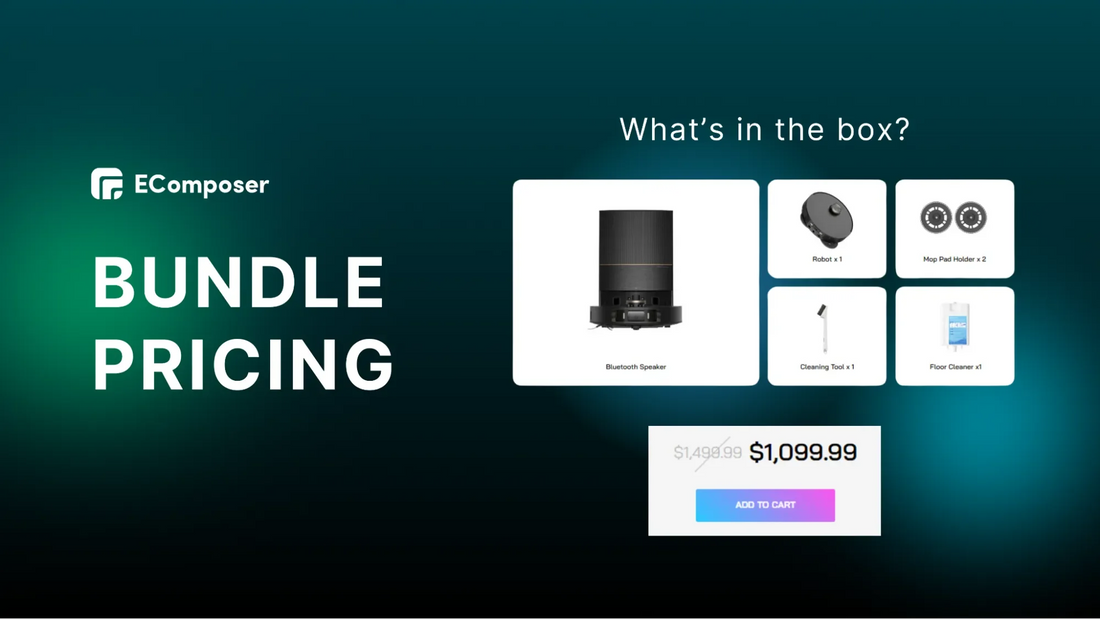
Table Of Contents
Are you looking for effective ways to increase revenue and enhance customer satisfaction? Bundle pricing might be the answer. This strategic approach combines multiple products or services into a single package, often at a discounted price. By understanding the benefits, crafting effective strategies, and exploring successful examples, you can unlock the full potential of bundle pricing for your business. This blog will provide valuable insights and practical tips to help you implement bundle pricing successfully. Let's dive in!
What is bundle pricing?
Bundle pricing is a strategic approach businesses use to sell multiple products or services at a combined price that is often lower than the total price of purchasing each item individually. This tactic is designed to offer added value to customers, encouraging them to buy more than they might have otherwise. It's a win-win situation: customers feel they’re getting a deal, and businesses can increase their sales volume and move more products.
Different types of bundle pricing
- Pure Bundling: Products are only available as part of a bundle, not individually. For example, a streaming service might offer a bundle of various channels that cannot be purchased separately.
- Mixed Bundling: Products are available both individually and as a bundle. For example, a fast-food restaurant may offer a meal combo (burger, fries, and drink) at a discount while selling each item separately.
- Leader Bundling: A popular or high-demand item is bundled with other less popular items. For example, a bestselling smartphone is sold with a case and screen protector.
- Joint Bundling is when two or more products are sold together for one price. An example is a vacation package with a flight, hotel, and rental car.
Benefits of bundle pricing for businesses & customers

Bundle pricing is a versatile strategy that brings significant advantages to companies and customers.
Benefits for Businesses
- Increased Sales Volume - Boosting Average Order Value: By offering a bundle, businesses encourage customers to spend more than they might have on individual items. This can significantly increase the average order value.
- Improved Inventory Management - Moving Slow-Moving Stock: Bundling popular items with slow-moving inventory helps clear out stock that might otherwise sit unsold.
- Enhance Customer Loyalty - Creating Perceived Value: Offering bundles at a discount makes customers feel they’re getting a better deal, increasing their satisfaction and loyalty.
- Competitive Advantage - Differentiation: Unique and attractive bundles can set a business apart from competitors, making its offerings more appealing.
- Streamlined Marketing - Simplified Promotion: Bundling products allows businesses to market a single package deal instead of multiple individual products, simplifying promotional efforts.
Benefits for Customers
- Cost Savings - Discounted Pricing: Customers can purchase multiple items at a lower price than buying each separately, leading to significant savings.
- Convenience - One-Stop Shopping: Bundles provide customers with all the necessary items in one purchase, saving time and effort.
- Perceived Value - Getting More for Less: Customers feel they are getting a better deal and more value for their money when purchasing bundles.
- Enhance Experience - Curated Solutions: Bundles often combine complementary products to enhance the user experience.
- Discovering New Products - Exposure to Additional Items: Customers may be introduced to new products they wouldn’t have considered buying individually.
Successful bundle pricing examples in business
Bundle pricing is a powerful strategy many businesses use to enhance their offerings, increase sales, and improve customer satisfaction. Here are some notable examples across different industries that showcase the effectiveness of bundle pricing.
1. Tech Industry: Microsoft Office Suite
Microsoft is a leading technology company known for its software products and services. Office 365 is a subscription-based service offering access to Microsoft’s suite of productivity tools. Microsoft bundles its Word, Excel, PowerPoint, and Outlook applications into the Office 365 subscription.
This bundle provides significant value to customers who need multiple productivity tools, encouraging them to subscribe rather than purchasing each software individually. The convenience and cost savings make it a compelling offer.
2. Beauty and Wellness: Sephora Skincare Sets

Sephora is a global beauty retailer offering various cosmetics, skincare, and fragrances. Known for its curated selection of high-quality products, Sephora caters to beauty enthusiasts worldwide. Sephora offers skincare sets with a cleanser, toner, moisturizer, and serum from popular brands.
These sets allow customers to try a whole skincare routine at a discounted price compared to buying each product separately. This boosts sales and introduces customers to new products, fostering brand loyalty.
3. Food and Beverage: Blue Apron Meal Kits

Blue Apron is a meal kit delivery service that offers fresh, pre-portioned ingredients and chef-designed recipes, making home cooking convenient and accessible. Blue Apron provides meal kits that include all the ingredients needed for several meals and recipes.
By bundling the ingredients and recipes, Blue Apron simplifies meal planning and preparation for customers, offering convenience and value. This has made it a popular choice for busy individuals and families.
4. Fashion and Apparel: Nike Outfit Bundles

Nike is a leading sportswear and equipment brand known for its innovative products and iconic designs. The company offers a wide range of athletic apparel, footwear, and accessories. Nike sells outfit bundles that include a top, bottom, and footwear, often at a discounted price.
These bundles make it easy for customers to purchase a complete athletic outfit in one go, enhancing their shopping experience. The discount incentivizes customers to buy the entire set rather than just individual pieces.
5. Fitness Industry: Peloton Equipment and Membership
Peloton is a fitness technology company that revolutionized home workouts with its high-quality exercise equipment and live-streamed, on-demand fitness classes. Peloton offers bundles that include an exercise bike or treadmill and an annual subscription to its interactive fitness classes.
This bundle creates a seamless fitness experience, combining high-quality equipment with engaging content. Customers are likelier to invest in the complete package, boosting equipment sales and subscription revenue.
6. Home Entertainment: Amazon Fire TV and Echo Dot Bundle
The eCommerce giant Amazon also produces a range of smart home devices, including the Fire TV for streaming and the Echo Dot for voice control with Alexa. Amazon often bundles its Fire TV Stick with an Echo Dot at a discounted price.
This bundle enhances the smart home experience by integrating voice control with streaming capabilities. The discount and added functionality make it an attractive deal for customers looking to upgrade their home entertainment systems.
7. Travel and Leisure: Expedia Vacation Packages
Expedia is a leading online travel agency that offers a range of travel services, including flights, hotels, car rentals, and vacation packages. These make travel planning convenient and affordable. Expedia offers vacation packages that bundle flights, hotel stays, and car rentals.
Customers appreciate the convenience and cost savings of booking an entire trip in one package. This all-in-one approach simplifies travel planning and often comes with significant discounts, making it a popular choice for travelers.
8. Software Services: Adobe Creative Cloud

Adobe is a renowned software company known for its creative and multimedia products. Adobe Creative Cloud provides a comprehensive suite of tools for creative professionals. Adobe bundles its suite of innovative applications (Photoshop, Illustrator, Premiere Pro, etc.) into a single subscription service.
Creative professionals and enthusiasts benefit from having access to all the tools they need in one subscription, which is more cost-effective than purchasing each software individually. This bundling strategy has helped Adobe maintain a strong market position.
9. Telecommunications: Verizon Wireless Family Plans
Verizon Wireless is one of the largest telecommunications providers in the U.S., known for its extensive network coverage and reliable services. Verizon offers family plans that bundle multiple phone lines with data, talk, and text services.
These plans provide significant savings compared to individual plans, encouraging families to subscribe. The convenience and cost benefits make it an appealing option for households.
10. Gaming Industry: Nintendo Switch Bundles
Nintendo is a leading video game company known for its innovative consoles and beloved game franchises like Mario, Zelda, and Pokémon. Nintendo frequently offers bundles, including Switch consoles, popular games, and accessories.
These bundles provide a complete gaming experience at a lower price than purchasing each component separately. They are trendy during holidays and major releases, driving significant sales.
These examples demonstrate how effective bundle pricing can be across various industries. By offering added value, convenience, and cost savings, businesses can attract more customers, boost sales, and enhance customer loyalty.
What companies use bundle pricing?
Bundle pricing can be a powerful strategy for a wide range of businesses.
Technology and Electronics
- Software companies: Offering software suites or bundles of complementary products.
- Hardware manufacturers: Bundling computers with peripherals or software.
- Electronics retailers: Creating bundles of related products (e.g., headphones, chargers, cases).
Retail
- Clothing stores: Bundling complementary items like shirts and pants or accessories.
- Grocery stores: Offering family packs or bundled products for convenience.
- Department stores: Creating themed bundles or gift baskets.
Services
- Telecommunication companies: Bundling internet, TV, and phone services.
- Fitness centers: Offering membership bundles with personal training or classes.
- Travel agencies: Creating vacation packages combining flights, hotels, and rentals.
Food and Beverage
- Restaurants: Offering meal combos or value meals.
- Coffee shops: Creating drink and food bundles.
- Subscription box services: Delivering curated bundles of food or beverages.
Subscription-Based Businesses
- Streaming services: Bundling video, music, and gaming subscriptions.
- Software-as-a-Service (SaaS): Offering tiered pricing with additional features in higher tiers.
- Subscription boxes: Curating and delivering themed product bundles.
Key considerations when implementing bundle pricing
- Complementary products: Ensure items in the bundle complement each other.
- Customer value: Offer a perceived value to customers through the bundle.
- Pricing strategy: Carefully calculate bundle pricing to maximize profit.
- Flexibility: Consider offering customization options within the bundle.
How to implement bundle pricing in your business

Identify Complementary Products or Services
- Analyze Your Offerings: Start by identifying products or services that naturally complement each other. For example, a tech company might bundle a laptop with a mouse and keyboard, while a beauty brand could bundle a cleanser, toner, and moisturizer.
- Understand Customer Needs: Consider the needs and preferences of your target audience. What combinations of products or services would provide added value and convenience?
Determine Your Bundle Pricing Strategy
- Pure Bundling: Offer products or services exclusively as a bundle. This is effective when you want to promote the sale of certain items together.
- Mixed Bundling: Offer products or services individually and as a bundle. This provides flexibility and caters to different customer preferences.
- Leader Bundling: Pair a popular item with complementary products. This can help drive sales of less popular items.
- Joint Bundling: Collaborate with another company to create a bundle that includes products or services from both businesses. This can expand your reach and attract new customer segments. For example, a fitness brand might partner with a nutrition company to offer a bundle that includes workout equipment and dietary supplements.
Set Attractive Prices
- Discounted Bundles: Offer the bundle at a lower price than the total cost of purchasing each item separately. This creates a strong incentive for customers to choose the bundle.
- Value Perception: Ensure that the bundled price reflects a good deal. Customers should feel they are getting significant value by opting for the bundle.
Create Compelling Bundle Offers
- Highlight Savings: Communicate the savings customers will get by purchasing the bundle. Use labels like “Save 20%” or “Bundle Deal” to draw attention.
- Showcase Benefits: Emphasize how the bundled products or services complement each other and enhance the overall customer experience. For example, a home office bundle could be marketed as a complete solution for remote work.
Promote Your Bundles Effectively
- Website and Online Store: Feature bundles prominently on your homepage, product pages, and checkout page. Use high-quality images and detailed descriptions to showcase the benefits.
- Email Marketing: Send targeted email campaigns to your subscribers, highlighting the value and savings of your bundles. Include special promotions or limited-time offers to create urgency.
- Social Media: Utilize social media platforms to promote your bundles. Share engaging posts, stories, and ads that showcase the benefits and savings of your bundles.
Monitor and Adjust Your Strategy
- Track Performance: Use analytics tools to monitor the performance of your bundles. Track metrics such as sales volume, customer feedback, and conversion rates.
- Gather Feedback: Collect feedback from customers to understand their satisfaction and any suggestions for improvement. This can be done through surveys, reviews, or direct communication.
- Adjust and Optimize: Based on performance data and customer feedback, adjust your bundling strategy as needed. Experiment with different combinations, pricing, and promotional tactics to find the most effective approach.
Provide Excellent Customer Service
- Support and Assistance: Ensure your customer service team is well-equipped to handle inquiries about bundle offers. Provide clear information and assistance to help customers make informed decisions.
- Flexible Return Policies: Offer a flexible return policy for bundled products. This helps build trust and encourages customers to try the bundles without fearing being stuck with unwanted items.
Challenge and common bundle pricing mistakes to avoid

Challenges of Bundle Pricing
Complexity in Management
- Inventory Management: Tracking bundled inventory can be challenging, especially if items are sold both individually and as part of bundles.
- Solution: Use robust inventory management software to handle bundling complexities and ensure accurate tracking of stock levels.
Perceived Value
- Customer Perception: If the bundled items are heavily discounted, customers may perceive them as lower quality or less desirable.
- Solution: Ensure the bundle is perceived as a high-value offer by clearly communicating the benefits and savings and including popular or high-quality items.
Profit Margins
- Pricing Balance: Striking the right balance between discounting and maintaining profit margins can be difficult.
- Solution: Carefully analyze your cost structure and pricing strategy to ensure profitable bundles. Review and adjust prices regularly as needed.
Customer Segmentation
- Varied Preferences: Different customer segments may have different preferences and needs, making it hard to create a one-size-fits-all bundle.
- Solution: Create multiple bundles tailored to customer segments, ensuring relevant and attractive options for each bundle.
Common Bundle Pricing Mistakes to Avoid
Inappropriate Product Combinations
- Mistake: Bundling unrelated or incompatible products that don’t provide added value to the customer.
- Solution: Ensure that bundled products complement each other and fulfill the customer's specific need or use case.
Overcomplicating the Bundle
- Mistake: Including too many items in a bundle, making it clear and manageable for customers.
- Solution: Keep bundles simple, focusing on complementary items that provide clear value.
Ignoring Customer Feedback
- Mistake: Please listen to customer feedback about the bundles, which can lead to satisfactory offers.
- Solution: Regularly collect and analyze customer feedback to understand their preferences and adjust bundles accordingly.
Lack of Promotion
- Mistake: Not effectively promoting the bundles, resulting in low awareness and sales.
- Solution: Use multiple marketing channels to promote bundles, such as email campaigns, social media, and website banners. Highlight the benefits and savings to attract customers.
Inflexible Bundling Options
- Mistake: Offering only rigid bundles without allowing customization or flexibility.
- Solution: Consider offering customizable bundles, in which customers can select from a selection of items to create their own bundle. This enhances customer satisfaction and perceived value.
Underestimating Costs
- Mistake: Not accounting for all costs associated with bundling, such as packaging, shipping, and potential discounts.
- Solution: Conduct a thorough cost analysis to ensure the bundle remains profitable after all associated costs are factored in.
Neglecting Inventory Issues
- Mistake: Failing to manage inventory properly, leading to stockouts or excess stock of bundled items.
- Solution: Use inventory management systems that can handle bundling complexities and ensure accurate tracking and forecasting of stock levels.
Over-Discounting
- Mistake: Offering too significant a discount on bundles can erode profit margins and devalue the products.
- Solution: Find a balance between offering attractive discounts and maintaining healthy profit margins. Test different pricing strategies to find the optimal discount level.
Lack of Clear Communication
- Mistake: Not communicating the benefits and value of the bundle to customers.
- Solution: Use clear, concise, and compelling messaging to highlight the bundle's savings, convenience, and added value. Provide detailed descriptions and visuals to help customers understand the offer.
Failing to Monitor Performance
- Mistake: Not regularly monitoring the performance of bundle pricing strategies, leading to missed opportunities for optimization.
- Solution: Use analytics tools to track bundle performance, including sales data, customer feedback, and conversion rates. Regularly review and adjust strategies based on insights gained.
BONUS: Tools & resources for effective bundle pricing
1. EcomRise

EcomRise is a comprehensive marketing tool that offers various solutions to boost sales and improve customer experiences. It provides robust features for creating and managing product bundles, driving conversions, and enhancing customer interactions.
Key Features
- Product Bundles: Seamlessly create and manage product bundles to encourage upselling and cross-selling. The “Frequently Bought Together” feature helps showcase complementary products, making it easy to increase average order values.
- Volume Discounts: Implement tiered pricing strategies to reward customers for larger purchases. This encourages higher spending and drives overall sales growth.
- Sales Notification (Sales Pop): Display real-time purchase notifications through popups to provide social proof, create a sense of urgency, and encourage additional purchases.
- Trust Badges: Instill confidence in customers by strategically placing trust badges and payment icons on your site. This can reduce cart abandonment and enhance trust in your bundles.
- Favicon Cart Count: Display a cart count on the browser tab to keep your bundles top of mind, remind customers of their items, and boost conversion rates.
- Inactive Tab Message: Re-engage customers who leave your site inactive by displaying messages encouraging them to return and complete their purchase.
- Content Protection: Disabling right-click functionality will protect your bundle offers and website content, ensuring your unique content remains secure.
How to Use
- Enhance Sales: Leverage Product Bundles and Volume Discounts to drive higher transaction values and boost sales.
- Build Confidence: Use Trust Badges and Inactive Tab Messages to create a reassuring shopping environment and recover potentially lost sales.
- Engage Customers: Utilize Sales Notifications and Favicon Cart Count to keep customers engaged and prompt them to finalize their purchases.
2. EComposer - Shopify Page Builder

EComposer is an intuitive page builder for Shopify that enables you to quickly create visually stunning, high-converting pages. It features a live drag-and-drop editor and a range of built-in extensions to enhance your store’s bundle pricing strategy.
Key Features
- Customizable Page Types: Design dedicated pages for your product bundles, including landing pages, collection pages, and product pages, to effectively showcase and promote your bundle offers.
- Live Drag-and-Drop Editor: Easily build and customize your bundle pages with a user-friendly, code-free interface, ensuring a seamless design experience.
- Design Library: Access a variety of page layouts and section templates to create attractive and effective bundle displays.
- Built-in Add-Ons: Enhance your bundle pages with add-ons like Ajax Cart and Color Swatch to improve functionality and visual appeal. These tools help streamline the purchasing process and highlight bundle options.
- Advanced Features: Utilize advanced tools such as Page Analytics and AI Content Generator to optimize the performance of your bundle pages and drive higher conversion rates.
How to Use
- Showcase Bundles: Use EComposer to design engaging and persuasive pages for your product bundles, making them easy to find and appealing to customers.
- Boost Conversion: Leverage built-in add-ons and advanced features to enhance user experience and increase the effectiveness of your bundle pricing.
- Optimize Performance: Ensure your bundle pages are fast-loading and high-performing with EComposer’s speed-up tools and optimized code.
Final thoughts
Bundle pricing into your strategy can significantly enhance your sales and customer satisfaction. By understanding its benefits, implementing effective strategies, and avoiding common pitfalls, you can create compelling offers that drive higher average order values and improve conversion rates. Utilize tools like EcomRise and EComposer to streamline and optimize your bundling efforts, ensuring you and your customers reap the rewards. Start bundling today for more tremendous success!
FAQs - Bundle Pricing

1. What are the drawbacks of bundle pricing?
Answer: While bundle pricing can boost sales and increase average order value, it may also lead to potential drawbacks such as reduced profit margins if discounts are too steep, inventory management challenges, and the risk of customers perceiving bundles as lower quality. Additionally, poorly designed bundles might not align with customer needs, resulting in lower sales.
2. How can I measure the success of my bundle pricing strategy?
Answer: Success can be measured through increased average order value, higher conversion rates, improved sales volume for bundled products, and customer feedback. Utilize analytics tools to track these metrics and assess the impact of your bundles on overall sales and customer satisfaction.
3. How do I determine the right discount level for my bundles?
Answer: The right discount level balances between attracting customers and maintaining profitability. Analyze your costs, competitive pricing, and customer willingness to pay. A/B tests different discount levels to find the optimal discount that maximizes sales while preserving profit margins.
4. Can bundle pricing work for all types of products?
Answer: Bundle pricing is most effective for complementary products or items that enhance each other. It may be less effective for unrelated products or high-end items where discounting could undermine perceived value. Assess your product range to determine which items can be effectively bundled.
5. What is the best way to promote my bundles to customers?
Answer: Promote bundles through various channels, including email marketing, social media, and your website. Highlight the bundles' benefits, savings, and convenience. Use eye-catching visuals and clear messaging to attract attention and encourage purchases.
6. How often should I update my bundles?
Answer: Regularly update bundles to keep them fresh and aligned with customer interests and seasonal trends. Consider adjusting based on sales data, customer feedback, and inventory changes. Periodic updates help maintain customer engagement and interest.
7. Is it possible to create custom bundles for customers?
Answer: Many eCommerce platforms allow for custom bundles where customers can select products to create personalized bundles. This approach can enhance customer satisfaction by offering flexibility and catering to individual preferences.
8. How do I handle returns for bundled products?
Answer: Clearly define your return policy for bundles, specifying whether individual items can be returned or the entire bundle must be returned. Communicate this policy to customers at purchase to avoid confusion and ensure a smooth return process.








![[16+] Key Factors To Creating High-Converting Landing Pages](http://ecomposer.io/cdn/shop/articles/image36_d556409c-ae96-447f-ae87-cad185353947.webp?v=1756325102&width=533)
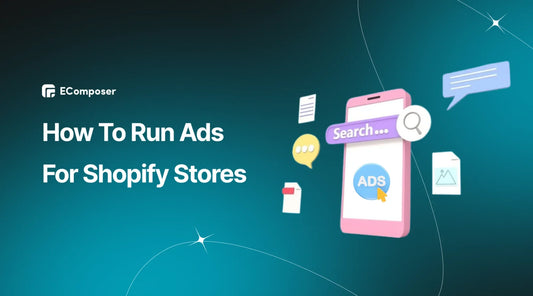
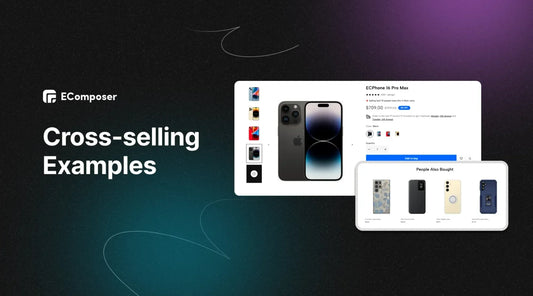
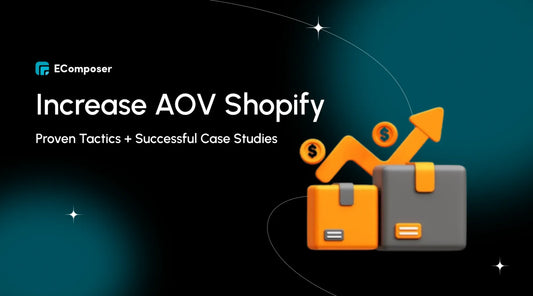

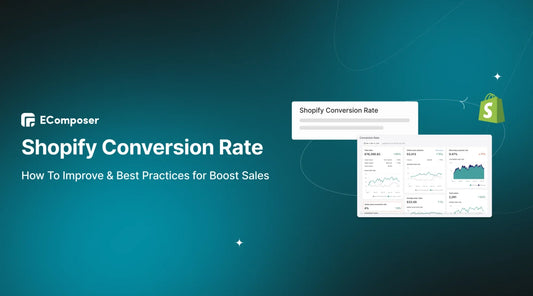







0 comments